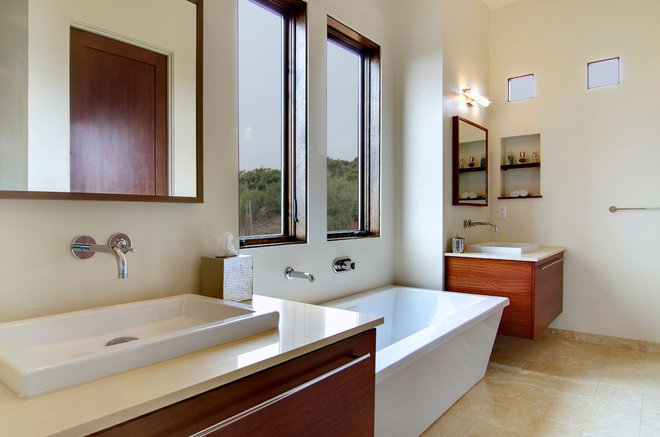Bathroom Workbook: 8 Elements of Contemporary Style
So when you’re remodeling a space for the first time and tasked with settling on a vision that reflects your personal taste, it’s not uncommon to wonder, “Just what is my style?”
In this series we’ll look at various bathroom styles to help you narrow your focus. Is your style contemporary, modern, transitional, rustic, industrial? Once something feels and looks right to you, then you can start going through more photos of spaces in that style to help guide you — and your designer — to the bathroom of your dreams.
Here are eight elements of contemporary style. See if it’s right for you.
“When tile starts to get patterning on the wall or an individual tile becomes ornate or complex, then it’s starting to get away from a cleaner, simpler design,” Little adds.
That goes for countertops, too. “People usually stick to the quartz line so there’s not a lot of movement,” says John Klacka, design director at Lars Remodeling and Design.
4. Contrast. Instead of ornate details and decor, designers add interest and drama in contemporary spaces with contrast. In this example, smooth concrete mixes with textural bamboo cabinets. There’s also some color contrast going on with white and black. Contemporary spaces tend to stick to colors and hues that are on opposite ends of the spectrum. “It’s more pleasing if you have the wow factor,” Moore says.
6. Open space. Even if it’s the illusion of open space, this is a key element. Floating vanities, expansive floors and an overall feeling of lightness and airiness are hallmarks of the style.
7. Colors. While some say contemporary leans toward cooler colors, Little disagrees. “Color is so personal you should not feel as a homeowner that you can’t put any whatever color you prefer,” she says. Instead, it’s more about how the color you choose interacts with the material choices.
Klacka likes going lighter to maintain a fresh, clean feeling. “Diamond white with hints of green, blue or gray is very light and crisp,” he says.






